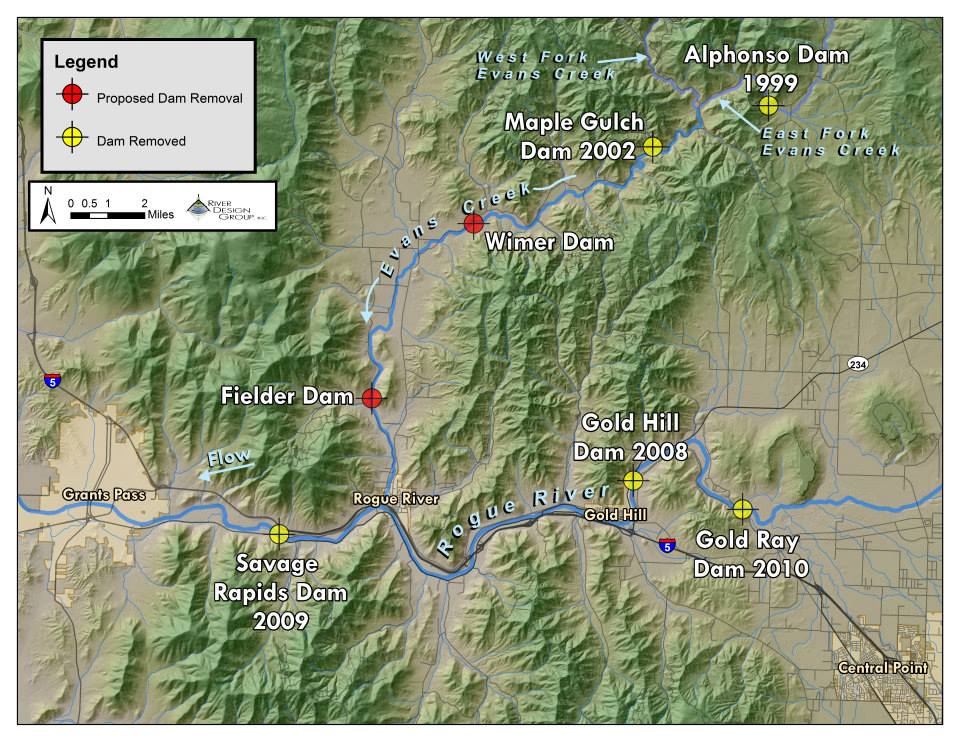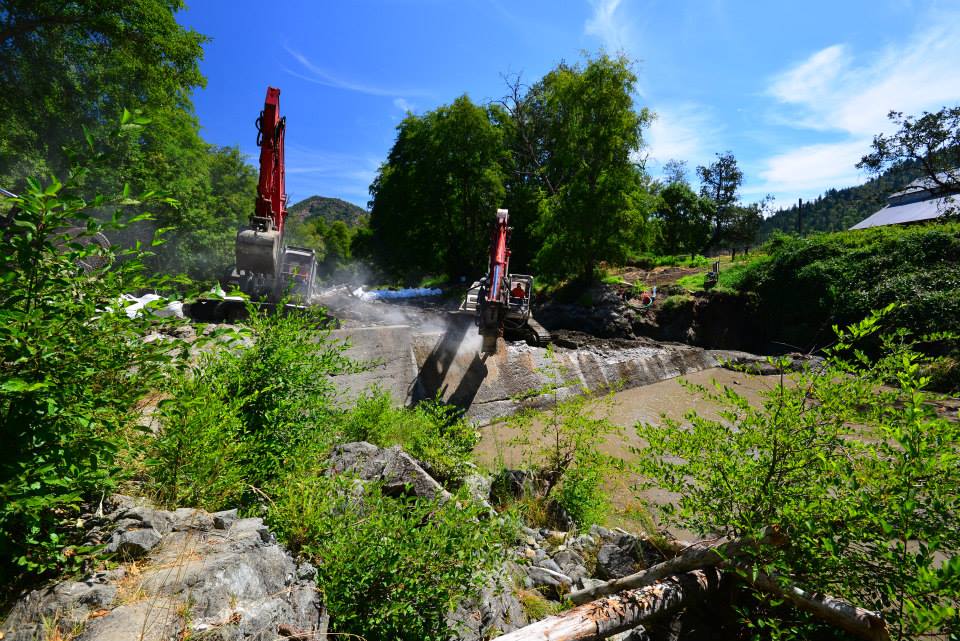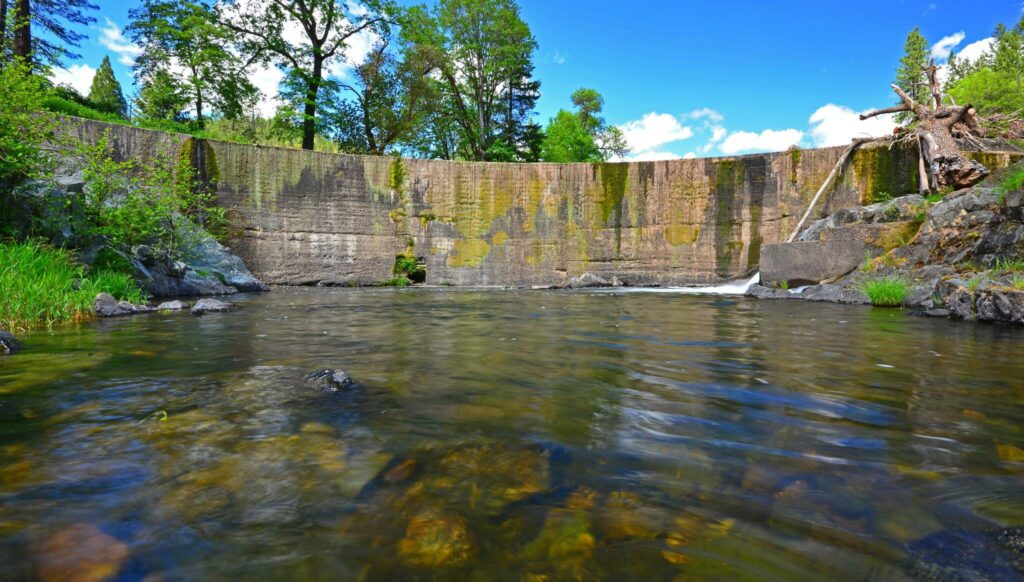By Jim McCarthy and Tonya Graham | Sept. 6, 2015 | Medford Mail-Tribune
In recent years, the growing number of successful removals of obsolete dams on North America’s salmon-bearing streams has become a celebrated symbol of progress, and represents a fundamental change in our relationship with rivers. The communities of the Rogue River Basin have good reason to be proud of our significant contribution to this profound change. Together, we are trailblazing one of the most successful dam removal and river restoration efforts in North America.
Our communities have worked together to remove Savage Rapids, Gold Hill, and Gold Ray dams on the main stem Rogue, and notched Elk Creek Dam on a key spawning tributary. Together, we’ve re-established one of the longest reaches of free-flowing river in the West — 157 miles — and helped bolster the river’s health and resilience for future generations. These removals have not only benefitted the Rogue’s salmon and steelhead populations, but have enhanced fishing, boating, and other recreational opportunities while supporting the economy of southern and coastal Oregon.
This summer’s removal of Fielder and Wimer dams on Evans Creek was an important addition to local river restoration efforts, providing improved access to 70 miles of high-quality salmon and steelhead spawning habitat. Because of the harm these dams caused, the Oregon Department of Fish and Wildlife ranked them both among Oregon’s top 10 statewide fish passage priorities. The fish ladders on these creek-spanning structures were poorly designed and maintained, and only passed fish under ideal conditions. Salmon and steelhead — including coho listed as threatened under federal law — were injured and killed while jumping against the face of the dams or out of the fish ladders.
Both these dams were abandoned irrigation diversions that hadn’t served their only legally allowed purpose — irrigation — for three decades. These structures were not designed for and did not provide water storage, flood control, or power generation. In short, both dams were the definition of obsolete, and were potentially expensive liabilities for landowners because they did not meet state fish passage standards and caused harm to federally listed salmon.
Fortunately for the landowners at these dams — and other landowners in similar situations — there are state and federal programs to fund important restoration work that can eliminate landowner liability by bringing them into compliance with the law, all while providing important restoration benefits and high-paying construction jobs. The landowners agreed to allow the removal of these dams, which were removed at no cost to them. Each was paid $5,000 to stage dam demolition from their property.
However, in the wake of this summer’s removals, some have argued that current law and policy towards obsolete, salmon-killing dams is wrong. They assert that Fielder Dam’s owners should have been allowed to violate the law by maintaining an illegal reservoir and obsolete, salmon-killing dam, regardless of the great harm to an important public resource. We disagree. WaterWatch was willing to enforce the law, then partnered with Geos Institute and others in committing significant staff time and resources over a span of years to solve the problem for both the resource and the landowners.
Unfortunately, some irresponsible individuals are trying to create public fear by spreading false claims of contaminated sediments behind the dams. This baseless scaremongering is especially harmful because it forces cash-strapped local governments to expend scarce resources to quell the public’s fears. Similar falsehoods were spread after the removal of Gold Ray and Savage Rapids dams, which released far more sediment than the Evans Creek dams. In that instance, the City of Grants Pass was forced to devote resources to debunk false claims about its water supply.
We urge members of the media and local leaders to carefully consult with the relevant government agencies before unwittingly repeating these and other falsehoods. Project partners for the Evans Creek removals spent over 18 months and $200,000 conducting required environmental review, sediment evaluation, engineering, and design work to assure the project met all state and federal guidelines. State and federal agencies were consulted throughout the planning process to ensure a safe plan was developed.
Now is the time to celebrate a dam removal project supported by so many forward-looking and river-loving Rogue Basin organizations and people. The Evans Creek dam removals provide tremendous benefits to the Rogue River fish populations, eliminate liabilities for local landowners and created high-paying construction jobs. In the coming years, let’s continue to work together to reduce the harm of obsolete dams, and see more of our spectacular Rogue Basin running free, healthy, and full of salmon.
Jim McCarthy is communications director and Southern Oregon program manager for WaterWatch of Oregon. Tonya Graham is executive director of the Geos Institute.
Photos and map courtesy of Scott Wright / River Design Group.



